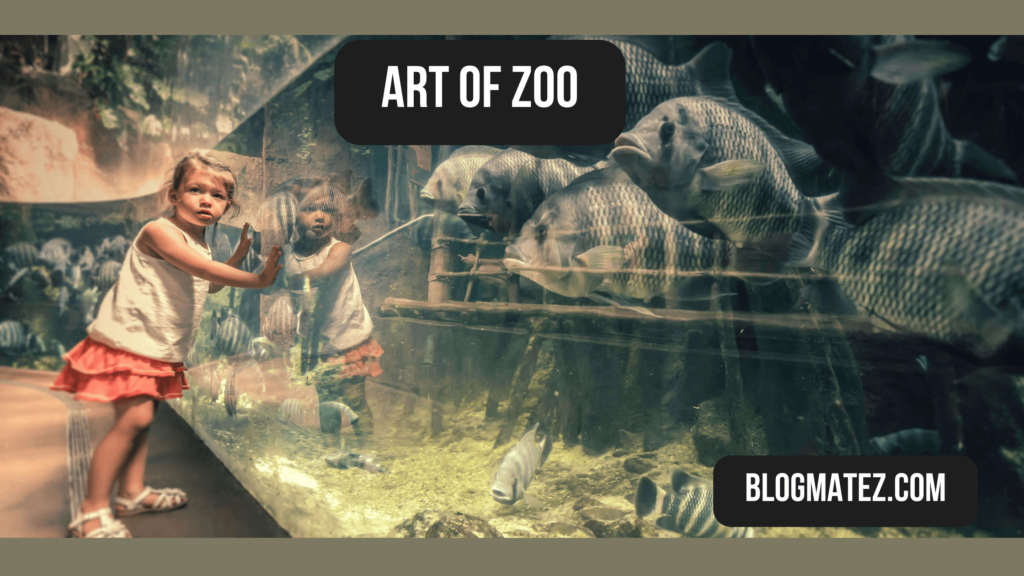Introduction to Art of Zoo
Zoo photography, often referred to as the Art of Zoo, is a specialized form of wildlife photography where photographers capture animals in their enclosures. It’s a field that requires skill, patience, and an understanding of both artistic and technical elements. While photographing animals in a zoo might seem simpler compared to capturing them in the wild, zoo environments present unique challenges.
These include working around enclosures, crowds, and limited lighting conditions. However, with the right techniques, zoo photography can be incredibly rewarding, helping to showcase the beauty and personality of the animals while fostering a deeper appreciation for wildlife conservation.
Understanding the Art of Zoo Photography
Zoo photography is more than just snapping pictures of animals behind fences or glass. It’s about telling a story through your lens—one that connects the viewer with the animal’s beauty, grace, and sometimes their vulnerability. The primary goal of zoo photography is to capture images that reflect the animal’s essence, just as a wildlife photographer would in the wild, but within the confines of a zoo setting.
Challenges in Zoo Photography
There are several challenges unique to zoo photography, including:
- Enclosures and Barriers: These can interfere with the image, making it hard to create a natural-looking scene.
- Crowds and Timing: Popular zoo exhibits often attract large crowds, limiting the space and freedom to move around for the best shot.
- Animal Behavior: Animals in zoos may be less active during certain hours, making it difficult to capture dynamic photos.
Essential Techniques for Mastering Zoo Photography
To excel in the Art of Zoo, photographers must employ a variety of techniques that help overcome the challenges of shooting in a controlled environment. By focusing on composition, lighting, and capturing the animal’s personality, you can create impactful and compelling images.
Focus on the Animal’s Eyes
One of the most critical aspects of any animal photography is the eyes. Capturing an animal’s gaze creates an instant connection between the viewer and the subject. This technique evokes emotion and draws the audience into the photograph.
- Tip: Use a long focal length to zoom in on the animal’s face, ensuring that the eyes are sharp and in focus.
Utilize Composition and Framing
In zoo photography, composition is key. With enclosures and unnatural backgrounds to contend with, it’s essential to frame your shot in a way that minimizes distractions and enhances the subject.
- Rule of Thirds: Place the animal off-center to create a balanced and visually appealing composition.
- Fill the Frame: Get closer to the animal, either physically or with a zoom lens, to remove barriers like fences or unnatural elements from the shot.
Mastering Lighting in Zoo Photography
Lighting plays a significant role in capturing the true essence of the animal. Since zoos have fixed environments, you may need to work around poor or harsh lighting conditions.
Shoot During Golden Hour
The best time to capture animals in a flattering light is during the golden hour—the hour after sunrise and the hour before sunset. During this time, the light is soft and warm, providing a natural glow to your subject.
- Tip: Plan your zoo visit around the golden hour to ensure optimal lighting for your shots.
Work with Shade and Reflections
Many zoo enclosures are shaded or covered, which can lead to challenging lighting conditions. Using the shade to your advantage can help reduce harsh shadows, while also preventing overexposure.
- Handling Reflections: When shooting through glass, reflections can spoil your images. Avoid this by placing your camera lens directly against the glass to reduce glare.
Using Long Focal Lengths to Your Advantage
A long focal length lens is one of the most useful tools in zoo photography. It allows you to shoot from a distance while minimizing distractions like fences, crowds, or unnatural backgrounds.
Blurring the Background
A long focal length lens helps create a shallow depth of field, which blurs the background and isolates the subject, making the animal appear as if it’s in its natural habitat rather than an enclosure.
- Tip: Use a lens with at least 200mm focal length to effectively zoom in and blur the background.
Creating Intimate Portraits of Zoo Animals
For many photographers, creating intimate portraits of animals is one of the most rewarding aspects of zoo photography. By focusing closely on the subject, you can capture the intricate details of their fur, feathers, or skin, which tells a deeper story.
Getting Physically Close
When possible, get physically close to your subject, ensuring that the animal’s face fills most of the frame. This creates a sense of intimacy and allows the viewer to appreciate the finer details of the animal.
- Tip: Use a wide aperture to focus on the animal’s face while softly blurring the background.
Incorporating Human Interactions
Incorporating human interactions with animals can add a narrative element to your zoo photography. Whether it’s a zookeeper feeding a lion or children observing a giraffe, these moments create a compelling story and add emotional depth to your images.
Telling a Story Through Interaction
Human-animal interaction photographs often show the bond between humans and wildlife, which can be powerful in conveying messages about conservation and care.
- Tip: Capture candid moments where humans are interacting naturally with animals, avoiding staged or forced poses.
Appreciating Wildlife Conservation through Photography
Zoo photography isn’t just about capturing beautiful images. It can also play an important role in wildlife conservation. By photographing animals in a way that showcases their beauty and fragility, photographers can raise awareness about endangered species and the importance of conservation efforts.
Promoting Conservation
Many zoos play a vital role in protecting endangered animals and educating the public about the need for conservation. As a photographer, you can contribute to these efforts by sharing your images and stories with a broader audience.
- Tip: Use captions or short descriptions to highlight the species’ conservation status, encouraging viewers to learn more about protecting wildlife.
Best Camera for Zoo Photography
1. Canon EOS R6
The Canon EOS R6 is a fantastic choice for zoo photography, thanks to its combination of powerful autofocus, excellent image quality, and impressive low-light performance.
- Full-frame sensor: Produces high-quality images with excellent detail, even in low light.
- Dual Pixel autofocus: Provides fast and accurate focusing, especially important for animals in motion.
- Animal detection autofocus: Specially designed to track the eyes and faces of animals, ensuring sharp focus where it matters most.
- 20 fps burst rate: Allows you to capture fast sequences, perfect for active animals.
The Canon EOS R6 is ideal for photographers looking for a camera that offers both speed and image quality in challenging zoo environments.
2. Nikon Z50
The Nikon Z50 is an excellent option for those looking for a lightweight and versatile mirrorless camera. Its compact design makes it easy to carry around the zoo, while its powerful features deliver stunning images.
- 20.9 MP APS-C sensor: Provides great image quality, particularly when paired with Nikon’s Z-mount lenses.
- 209-point autofocus system: Ensures sharp focus, even in dynamic shooting environments.
- 11 fps continuous shooting: Helps capture quick-moving animals in action.
- Built-in image stabilization: Ensures steady shots, especially at longer focal lengths.
The Nikon Z50 is a great entry-level option for zoo photographers who want flexibility and performance without carrying heavy gear.
3. Sony Alpha a6400
The Sony Alpha a6400 is another strong contender for zoo photography. This mirrorless camera excels at fast autofocus and accurate tracking, making it ideal for wildlife photographers.
- 24.2 MP APS-C sensor: Offers excellent detail and dynamic range.
- Real-time autofocus: Features animal eye autofocus, making it easier to track and focus on animal subjects.
- 425 phase-detection points: Provides wide and fast autofocus coverage across the frame.
- 11 fps burst mode: Ensures you never miss a moment during fast-moving scenes.
Its compact size and robust features make the Sony Alpha a6400 perfect for photographers who prioritize portability without sacrificing quality.
4. Panasonic Lumix FZ1000 II
For those looking for a superzoom bridge camera, the Panasonic Lumix FZ1000 II is a top choice for zoo photography. It offers excellent zoom capabilities without the need for interchangeable lenses.
- 16x optical zoom: Equivalent to 25-400mm, providing the versatility to shoot both wide-angle and telephoto shots in a single camera.
- 1-inch 20.1 MP sensor: Delivers impressive image quality for a bridge camera.
- 5-axis Hybrid Optical Image Stabilization: Reduces camera shake, crucial when zooming in on distant animals.
- 4K video recording: Allows you to capture high-quality video along with stills.
The Lumix FZ1000 II is perfect for photographers who want an all-in-one solution without carrying multiple lenses.
5. Canon PowerShot SX70 HS
The Canon PowerShot SX70 HS is an excellent budget-friendly option for zoo photographers who need a compact camera with powerful zoom capabilities.
- 65x optical zoom: Equivalent to 21-1365mm, perfect for shooting animals at a distance.
- 20.3 MP sensor: Delivers high-quality images even in varying light conditions.
- 5-stop Image Stabilization: Helps achieve sharp images at long focal lengths.
- 4K UHD video: Offers the ability to shoot high-quality video as well.
For hobbyists or beginners, the Canon PowerShot SX70 HS offers incredible zoom power in a compact, easy-to-use package.
6. Nikon Coolpix P1000
The Nikon Coolpix P1000 is known for its extraordinary zoom capabilities, making it a great camera for capturing animals that are far away, such as those in larger enclosures or exhibits.
- 125x optical zoom: Equivalent to an incredible 24-3000mm, allowing you to capture distant subjects with ease.
- Dual Detect Optical VR: Ensures that even at maximum zoom, your images are sharp and clear.
- 16 MP sensor: While lower than some cameras on this list, the sensor still delivers good quality for long-range shots.
- 4K UHD video recording: Allows you to capture stunning videos of animals in action.
Conclusion
The Art of Zoo photography is a fascinating and rewarding field that combines creativity with technical skill. By focusing on key elements like lighting, composition, and interaction, you can overcome the challenges of shooting in a zoo environment and produce stunning images that connect viewers with wildlife. Whether you’re a beginner or a seasoned photographer, zoo photography offers endless opportunities to refine your skills while supporting the important cause of wildlife conservation.






